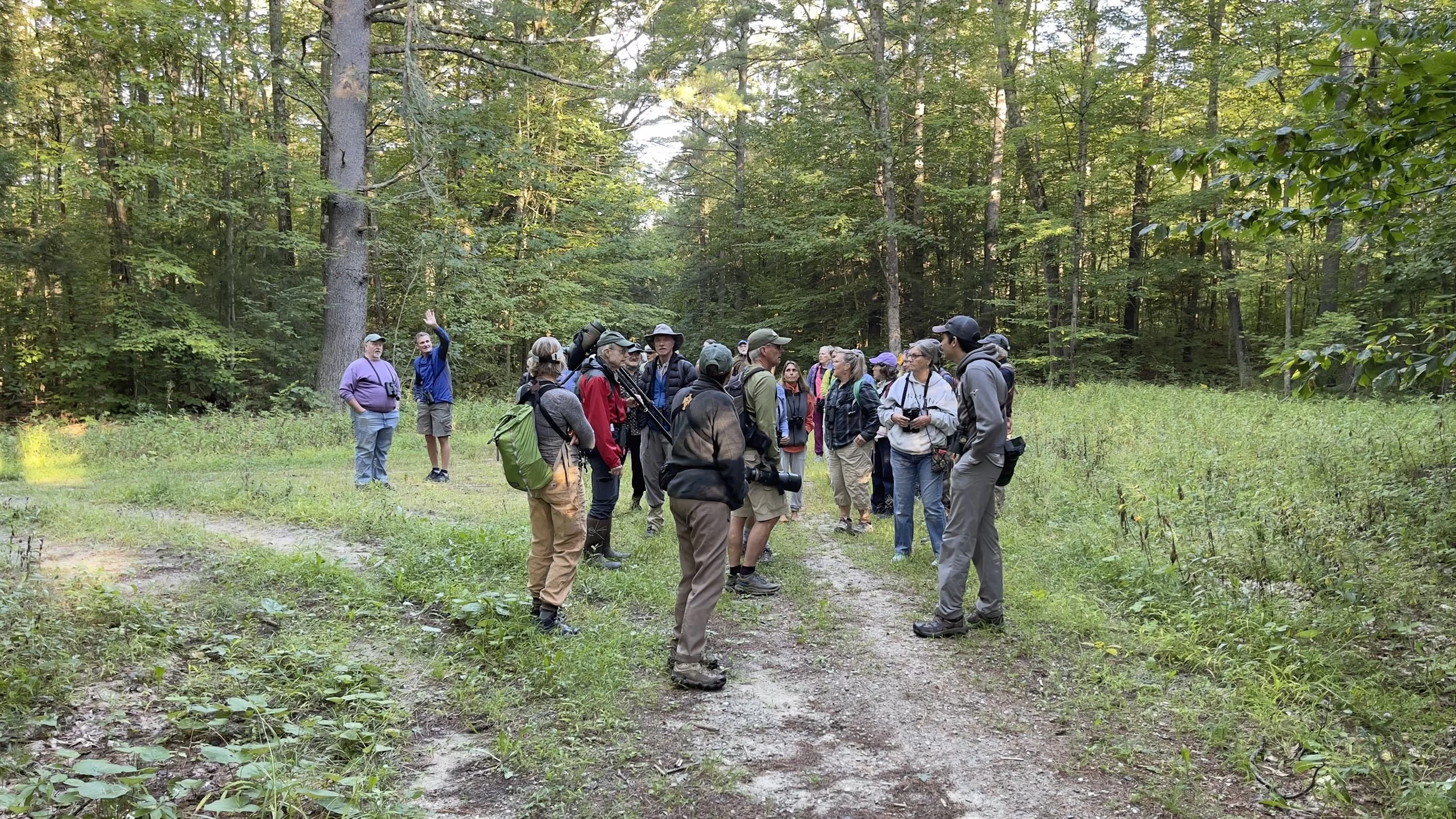Freya McGregor describes herself as an “occupational therapist, a disabled birder, an Australian living in the US, a military spouse, a writer, a researcher, a consultant, and an advocate for access and inclusion in birding and the outdoors.” She is one of the most articulate and outspoken advocates for disabled birders, and she is a frequent contributor to publications, including Audubon magazine.
Late Winter and Early Spring Birding Opportunities
March and April can be exciting times to experience the many waterfowl species migrating back to their breeding grounds in the Arctic: Colorful Wood Ducks, improbably-billed Northern Shovelers, Gadwalls, American Wigeons pausing on their way to the tundra and boreal forest, elegant Northern Pintails, both kinds of teal, the diminutive Green-winged Teal, North America’s smallest dabbler, and the later-arriving Blue-winged Teal, the male’s blue upper-wing patch stunning in flight. These “dabblers” feed by head dipping.
Birding Hotspot Highlight ~ Geprags Community Park
Geprags Community Park is a fantastic 80-acre property owned and managed by the town of Hinesburg that hosts myriad bird species and Spring ephemeral wildflowers. It contains different habitats including grasslands, shrublands, and mature northern hardwood forests that are attractive to many bird species. The latest eBird species count there is 163, with 1581 checklists submitted. The main perimeter trail is about 1.1 miles long; if you explore all the side trails you will cover almost 2 miles and gain 134’ of elevation. This park is one of the best places in Vermont to find breeding Golden-winged Warblers, Blue-winged Warblers, and some of the hybrids like Golden-winged X Blue-winged Warbler, Brewster’s Warbler, and Lawrence’s Warbler. A collaboration started over a decade ago between the Hinesburg Conservation Commission (HCC), Audubon Vermont, and Vermont Fish & Wildlife Department has successfully managed this habitat.
Birds By the Numbers: 75 Years of the Burlington CBC
In mid-December each year, people in the Burlington area flock to tally which birds make this part of Vermont their home. This past year on December 18th, a calm winter morning greeted 74 participants as they made their way outdoors on foot, by car, by snowshoe, or from the comfort of their homes, to count. From Williston to the waterfront, and from Mallets Bay to the middle of Shelburne, birds were identified and recorded as part of the “Christmas Bird Count.”
Bird Outings
Contributed by Patrick Phillips
New Year’s Day on the Burlington Waterfront
Members of the Green Mountain Audubon Society and guests started off 2023 with a New Year’s Day Birding excursion along the Burlington waterfront. Twelve birders braved damp conditions and strong winds out of the northwest, catching sight of fifteen avian species, the highlight of which was a lone Snow Goose flying overhead in the midst of a string of Canada Geese. While all hoped to report a more diverse array of birds, everyone agreed that it was indeed a fine way to bring in the New Year!
Link to New Year's Day Bird outing eBird report: https://ebird.org/checklist/S125142338
President's Message: The Next Generation
I have the good fortune to monitor a Peregrine Falcon nesting site through a program managed by Margaret Fowle of Audubon Vermont. Each spring for the past several years I have traveled to a cliff site called Upper West Bolton Notch to check on a pair of Peregrine Falcons. The site has been productive, with chicks fledging each year. It is wonderful to be one of the few people who get to see the fastest animal on Earth training its young to become the fastest animal on earth. In graceful flights the parent shows its offspring how to use all of the tools available - body, wings, tail, talons, bill - to maximize its chances of thriving. In this way, one generation ensures that the next generation may be successful.








